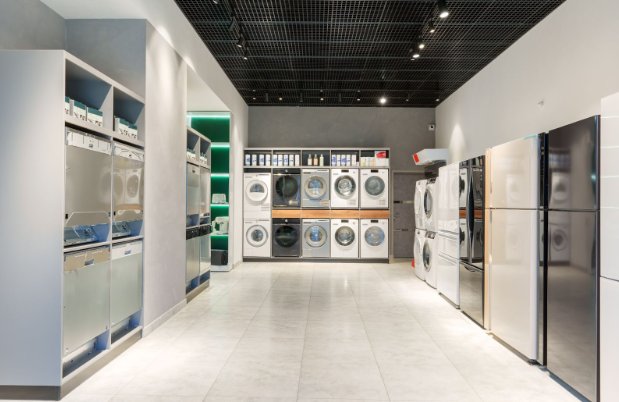Ever consider if your homeowners insurance covers your appliances? We’re talking about the essentials – your fridge, oven, and washing machine.
Let’s dive into “How does Homeowners Insurance Cover Appliances?” and simplify how your policy works with your home gadgets. Because understanding your coverage should be straightforward, not a headache. Let’s get to the bottom of this together.
Types of Coverage for Appliances
First off, your home insurance policy is like that multi-layered outfit you wear when you can’t decide on the weather. It’s got you covered (pun intended) in more ways than one.

Personal Property Coverage
Personal Property Coverage protects the portable gadgets that make daily life more convenient. Whether preparing meals, cleaning, or starting your day with a fresh cup of coffee, these items are often covered under your policy, assuming they can be unplugged and moved. Here’s a quick overview of what’s typically included:
- Microwave: Covered if it can be unplugged and moved.
- Dishwasher: Freestanding units are usually included.
- Coffee Maker: Countertop models are generally protected.
- Blender: Portability often ensures coverage.
- Toaster: Small, movable appliances tend to be covered.
Remember, while many of these items are covered by most policies, it’s essential to understand your policy’s specifics to ensure your specific policy provides coverage. A quick phone call to your insurance agent can provide an answer.
Dwelling Coverage
Dwelling Coverage protects your home’s integral components, including built-in systems and appliances that are essential to its functionality. This type of coverage ensures that if parts of your home’s structure, such as the heating system or built-in kitchen appliances, suffer damage, your insurance policy is designed to help with repairs or replacements. Here’s a look at what’s typically covered:
- Furnace: Protected as a crucial heating system component.
- Built-in Stovetop: Coverage includes fixed kitchen appliances.
- Air Conditioning System: Integral cooling systems are covered.
- Built-in Dishwasher: Included as part of the kitchen’s permanent fixtures.
- Water Heater: Essential home utilities like this are covered.
Understanding the extent of your Dwelling Coverage is vital for knowing how your home is protected against damage or loss, ensuring peace of mind in unexpected events.
Other Structures Coverage
Other Structures Coverage extends the protective umbrella of your home insurance to include the spaces beyond the main living area. This coverage is designed for the “extras” on your property, such as a fully equipped garage or a well-appointed she-shed.
Whether you’ve created a personalized retreat or a functional workspace, the appliances and features within these detached structures are covered under this part of your policy. Here’s what falls under Other Structures Coverage:
- Garage Appliances: Tools and appliances in your garage are covered.
- She-Shed Furnishings: Includes all the special trimmings in your hideaway.
- Workshop Equipment: Coverage for machinery and tools in your workshop.
- Garden Shed Tools: Protects gardening equipment and other items stored in sheds.
- Pool House Fixtures: Covers appliances and fixtures in pool houses or similar structures.
This coverage ensures that the unique elements that make your property your own are protected, broadening the scope of your home insurance to the extended universe of your home’s outdoor structures.
When Does Insurance Step In?
Here are some examples of when insurance might step in and provide coverage: :
- Fire: Whether it’s a minor mishap or a major blaze, fire damage to your appliances is usually covered.
- Theft and Vandalism: If someone decides they love your appliances more than you do, or they just want to wreak havoc, you’re generally covered.
- Natural Disasters: Lightning strikes, and suddenly your electronics are fried? This is where your insurance shines.
What about Wear and Tear?
But here’s the deal – wear and tear isn’t covered. So, if your appliances just decide to retire after years of faithful service, that’s on you.
Specific Situations and Coverage
Insurance policies often come with specific provisions for various scenarios that could affect your home or rental space. Let’s dive into how these policies apply in certain situations:
- Kitchen Catastrophes: Imagine your built-in oven decides to go rogue and start a fire. Dwelling coverage should cover the repairs. Plus, if you can’t use your kitchen, loss of use coverage might cover your food and lodging expenses. It’s like your policy’s way of taking you out to dinner (sort of).
- Renter Realities: If you’re renting, your landlord’s insurance probably doesn’t cover your personal appliances. But renters insurance can step in here, protecting your belongings from damage or theft. It’s like having a safety net for your stuff.
Making Informed Decisions
Here’s where we focus on the essentials. Deciding on extra coverage depends on a few things:
Assess Your Arsenal: Take stock of what appliances you have, their age, and warranty status. If they’re still under manufacturer warranty, you might be chillin’ for now.
Read the Fine Print: Whether it’s your insurance policy or a home warranty, knowing what you’re signing up for is crucial. Look out for exclusions, coverage limits, and deductibles.
Cost vs. Benefit: Weigh the cost of additional coverage against the potential out-of-pocket expenses for repairs or replacements. Sometimes, paying a little extra now can save you a ton in the long run.
Summary
We’ve explored how home insurance covers appliances, from the types of coverage to when it steps in to help. Now, you’re ready to make smart choices about protecting your home and everything in it.
Keep in mind, it’s important to be proactive with your coverage. Having it before you need it is better than wishing you had it when it’s too late. Stay informed, stay protected, and confidently continue your journey as a homeowner or renter.
FAQs
Do I need additional coverage for high-end appliances?
Yes, you might. High-value items often require additional coverage or a rider to fully protect their value since standard policies have limits on the amount they’ll pay out for a single item.
How does depreciation affect the coverage of my appliances?
Many insurance policies consider depreciation when determining the payout for damaged or stolen items. You might receive the actual cash value (the item’s value after depreciation) rather than the cost to replace it new. However, some policies offer replacement cost coverage for an additional premium.
Does homeowners insurance cover appliances during power surges not caused by lightning?
Coverage for power surges can be complicated and often depends on the cause of the surge. While lightning strikes are commonly covered, surges from other sources may not be. Review your policy or consult with your insurer for specifics.
Disclaimer: This content is for informational purposes only and should not be considered legal or financial advice. Always consult with qualified professionals in legal and financial fields before making any decisions.

